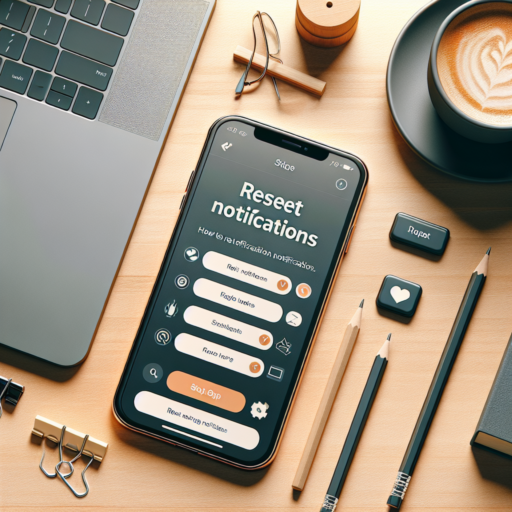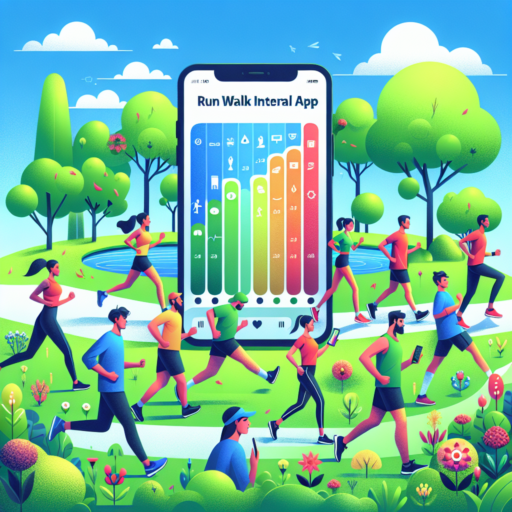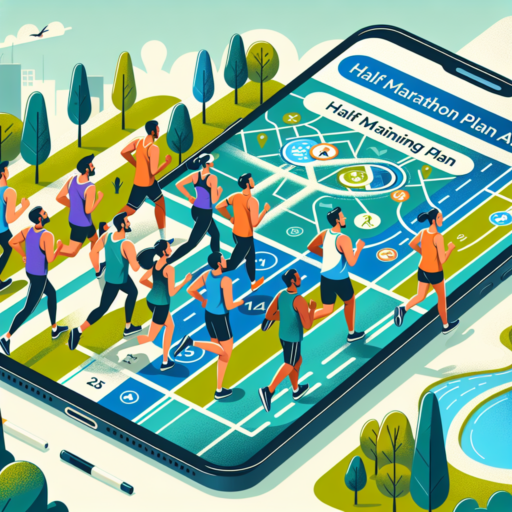What is a Running Pace App and How Does It Work?
A Running Pace App is a specialized tool designed to assist runners in monitoring and analyzing their running pace in real-time. This innovative technology provides instant feedback on the speed at which a runner is moving, helping them to adjust their pace according to their training goals or racing strategies. By utilizing GPS technology and sophisticated algorithms, running pace apps can accurately measure the distance covered and the speed maintained over that distance, offering insights into the runner’s performance and endurance levels.
At its core, the functionality of a running pace app hinges on its ability to track location and movement through GPS. Once activated, the app continuously collects data on the runner’s location, calculating the distance traveled and dividing it by the time taken to cover that distance, thus determining the pace. This information can then be displayed to the runner in various formats, such as minutes per kilometer or miles, allowing for easy comprehension and immediate adjustment of running intensity.
Beyond just tracking pace, many running pace apps come equipped with a multitude of features aimed at enhancing the running experience. These may include personalized training plans, audio cues for pace guidance, social sharing capabilities for added motivation, and detailed analytics to track improvement over time. By integrating these functions, a running pace app not only serves as a digital coach but also as a source of motivation and a tool for community engagement among runners.
Top Features to Look for in a Running Pace App
When searching for the perfect running pace app, it’s crucial to identify the key features that will enhance your training and help achieve your fitness goals. Among these, versatility in tracking metrics beyond just pace is fundamental. A comprehensive running pace app should offer detailed insights into your speed, distance, elevation, and heart rate. These metrics allow for a well-rounded view of your performance, enabling you to tailor your running sessions more effectively to meet your personal objectives.
Another essential feature to consider is the app’s ability to set customizable goals and plans. Whether you’re training for a marathon or looking to improve your 5K time, the ability to configure personal targets and receive tailored training plans directly impacts your motivation and progress. This customization ensures that the app is not just a passive tracking tool but an active participant in your running journey, guiding you step by step towards your targets.
Integration with other devices and platforms significantly enhances the user experience of any running pace app. The capability for seamless syncing with wearable technology and other fitness apps offers a cohesive and comprehensive view of your overall fitness. This interconnectivity ensures that your running data contributes to a larger fitness ecosystem, enabling more accurate tracking of your progress and providing insights that help refine your training regimen.
Lastly, the inclusion of a social feature where runners can share their achievements and connect with a community can be a significant motivator. The encouragement from peers and the competitive spirit kindled by community challenges often push runners to strive for better performance. Such features not only make the training experience more enjoyable but also foster a supportive environment for runners at all levels.
The 5 Best Running Pace Apps of the Year
Discovering the right running pace app can be a game-changer for athletes and casual runners alike, offering insights, training plans, and encouragement to hit that next PR or simply enjoy their runs more. With the myriad of options available, finding the best running pace apps has become a priority for those looking to enhance their running experience. This year has seen the emergence of standout apps that cater to a variety of needs, from real-time coaching to detailed analytics.
Among the leading applications, features such as GPS tracking, personalized coaching, and community challenges stand out. These apps not only provide data on your pace but also delve into aspects like cadence, stride length, and overall performance improvements over time. This allows runners to tailor their training regimes more precisely and set achievable goals, making each run more effective.
The importance of integrating such apps into your running routine cannot be overstated. They offer motivation through virtual competitions, enable sharing achievements with friends, and often include wellness advice to reduce injury risk. The end result is a more informed and connected running experience that can transform the way you view your runs, turning them from a mundane task to an exciting journey of progress and discovery.
How to Use a Running Pace App to Improve Your Performance
Running pace apps have become indispensable tools for runners of all levels, keen on tracking progress and optimizing their performance. By understanding how to effectively use a running pace app, individuals can set realistic goals, analyze performance metrics, and adjust their training strategies accordingly. Here’s an essential guide to getting the most out of these innovative tools.
Setting Realistic Goals
One of the first steps to improving your performance with a running pace app is setting achievable goals. Whether it’s increasing your distance, improving your pace, or preparing for a race, clearly defined goals help structure your training plan. Use the app to track your current pace and set goals that challenge you without setting you up for injury or disappointment.
Analyzing Performance Metrics
The data gathered by your running pace app offers invaluable insights into your performance. By examining metrics such as average pace, total distance, and calories burned, runners can identify areas of strength and those in need of improvement. Pay particular attention to the pacing chart over various runs to understand your consistency and endurance levels. Analyzing this data allows for targeted tweaks to your training regimen, ensuring every run takes you a step closer to your goal.
Adjusting Training Strategies
Armed with data and clear objectives, it’s time to adjust your training strategies. If your goal is to improve your overall pace, for instance, integrate interval training or tempo runs into your schedule, as suggested by the pace app. For those focusing on distance, the app may recommend gradually increasing your weekly mileage. Listening to your body and adapting your plan according to the feedback from the app ensures continuous improvement and helps avoid overtraining or injuries.
Running Pace Apps: Are They Accurate?
When it comes to tracking our running pace, many of us turn to various running pace apps available on our smartphones or wearable devices. These apps promise to provide real-time data about our speed, distance, and overall performance, making them invaluable tools for athletes looking to improve. However, one question frequently arises in the minds of users: «Are these running pace apps accurate?»
The accuracy of running pace apps can be influenced by several factors, including the quality of the GPS signal, the algorithm used by the app, and even the specific make and model of the device being used. Generally, apps that utilize GPS technology to track your run are more accurate in open spaces where the signal is unobstructed. In contrast, those relying on motion sensors may not provide the same level of precision, especially in areas where GPS connectivity is weak or disrupted.
Understanding the technology behind these apps can shed light on their potential accuracy. For instance, GPS-enabled apps measure distance by calculating the changes in your position over time, which can be highly accurate under the right conditions. On the other hand, apps that calculate pace and distance using step count or motion sensors might not be as precise, as they rely on average data and estimations rather than direct measurements.
No se han encontrado productos.
Integrating Your Running Pace App with Other Fitness Tools
In the digital age, tracking your fitness journey goes beyond merely clocking in the miles. Integrating your running pace app with other fitness tools can elevate your training, providing a holistic view of your fitness progress. This seamless connection between various tools not only simplifies the logistics of managing your fitness data but also offers profound insights into your overall health and endurance development.
Many running enthusiasts are unaware that their pace tracking applications can be synchronized with broader fitness ecosystems. Platforms such as smart watches, heart rate monitors, and even nutrition tracking apps can often be linked, creating a comprehensive dashboard of your physical activities and dietary habits. By doing so, you gain the capability to analyze how your daily nutrition, sleep patterns, and cardiovascular health affect your running performance in fine detail. This integrated approach motivates the need for compatibility across your fitness device spectrum.
To begin the integration process, start by exploring the connectivity options within your running pace app. Look for features that enable synchronizing with other applications or devices. Often, it’s as simple as accessing the settings or preferences section and selecting the right options to connect your accounts. Through this, your running performances and additional health metrics are compiled in one place, offering you a well-rounded view of your fitness journey and enabling you to set more informed and achievable targets.
Personalized Training Plans in Running Pace Apps: A Game Changer for Runners
In the world of long-distance running and marathon preparation, the introduction of personalized training plans within running pace apps has revolutionized the approach athletes take towards their training. These customizable plans allow runners of all levels to tailor their workouts specifically to their goals, current fitness levels, and schedules. Instead of a one-size-fits-all regimen, athletes now have access to training that adapts to their personal needs, making each run more effective and enjoyable.
Utilizing advanced algorithms and performance tracking, these running apps analyze a user’s pace, heart rate, previous performances, and even recovery times to craft a plan that pushes the boundary of their abilities without risking overtraining or injury. This dynamic adjustment not only keeps the training challenging but also significantly reduces the guesswork in preparing for races or improving general fitness. Whether aiming for a personal best in a 5K or tackling the daunting task of a marathon, runners have found an invaluable resource in these smart training programs.
The interactive nature of today’s running apps encourages a more engaged relationship with training. Through instant feedback on progress and the ability to adjust goals and workouts, runners can see tangible improvements in their performance. This real-time communication fosters a sense of personal achievement and motivation that traditional training methods often lack. As a result, the emergence of personalized training plans in running pace apps is not just enhancing physical endurance but is also contributing to stronger mental resilience among runners.
User Reviews: What Runners Love About the Top Running Pace Apps
In the realm of fitness innovation, running pace apps have revolutionized the way runners train and monitor their performance. User reviews play a crucial role in identifying which apps truly stand out in terms of functionality, user-friendliness, and accuracy. According to a myriad of reviews from beginner to advanced runners, there are several aspects that make the top running pace apps truly exceptional.
Instant Feedback and Motivation is a feature highly praised by users. Runners love apps that provide real-time feedback on their pace, distance, and overall performance during their runs. This instant feedback mechanism helps them adjust their pace on the go, ensuring they meet their training goals. Additionally, motivational prompts and audio feedback during runs have been highlighted as key factors that enhance the running experience, making users feel like they have a personal coach right in their ear.
Another standout feature according to user reviews is Accuracy and Reliability. Runners depend on the app’s GPS and motion sensor data to accurately track their runs. Top-rated apps are those with minimal discrepancies in distance and pace measurements, giving runners the confidence that their training data is precise. Users also appreciate when these apps seamlessly integrate with other fitness trackers and smartwatches, further enhancing their training ecosystem.
Lastly, the feature of Customization and Goal Setting is frequently noted in positive reviews. Users enjoy apps that allow them to customize their running intervals, set personal goals, and track their progress over time. Whether it’s preparing for a 5K or aiming to improve one’s marathon time, having a customizable plan and being able to monitor improvements is highly valued among the running community.
Running Pace Apps vs. Traditional Running Watches: Which is Better?
In the battle of tracking performance, runners often find themselves at a crossroads: deciding between using running pace apps or traditional running watches. Both come packed with features aimed at enhancing your running experience, but they cater to different preferences and needs.
Accessibility and Ease of Use
Running pace apps, accessible via smartphones, stand out for their convenience and ease of use. In the age where smartphones are practically glued to our hands, it’s no surprise that many opt for an app that tracks pace, distance, and offers personalized training plans. These apps often integrate easily with other health apps, providing a comprehensive overview of your fitness regime. However, the convenience can sometimes be overshadowed by the need to carry a smartphone during a run.
Durability and Precision
On the other hand, traditional running watches are built for endurance and accuracy. Designed specifically for runners, these watches offer unparalleled precision in tracking pace, distance, and even heart rate, without the need to carry an extra device. Their robust build ensures they can withstand harsh running conditions, making them a reliable companion for serious runners. Additionally, many running watches come with long-lasting battery life, eliminating the need for daily charging.
Each method of tracking running pace has its advocates, driven by personal preference, the level of detail required in data collection, and the overall running experience desired. Whether you’re a casual runner looking for convenience or a dedicated athlete seeking accuracy and durability, the choice between running pace apps and traditional running watches is a pivotal one.
Tips for Getting the Most Out of Your Running Pace App
Maximizing the benefits of your running pace app can transform your training sessions and help you achieve your fitness goals more effectively. These apps are designed not just to track your speed but to enhance your overall running experience. By understanding how to leverage their features, you can unlock a new level of proficiency in your running regimen.
Personalize Your Settings
First and foremost, personalizing your app’s settings to align with your specific goals and preferences is crucial. Most running pace apps offer customization options such as setting your desired pace, distance goals, and even type of workout (e.g., interval training, steady-state runs). Taking the time to adjust these settings can lead to a more tailored and beneficial running experience.
Utilize Real-Time Feedback
Another key advantage of using a running pace app is the ability to receive real-time feedback. This feature can act as an on-the-go coach, giving you instant insights on your pace, distance covered, and heart rate. Paying attention to this feedback and adjusting your effort accordingly can help you maintain the correct intensity level throughout your run, preventing overexertion and promoting consistency.
Integrating your running pace app into your training routine offers a wealth of benefits that go beyond simply tracking your speed. By personalizing your settings and utilizing real-time feedback, you can make each run more effective and enjoyable. Embrace the technology at your fingertips to take your running performance to the next level.




